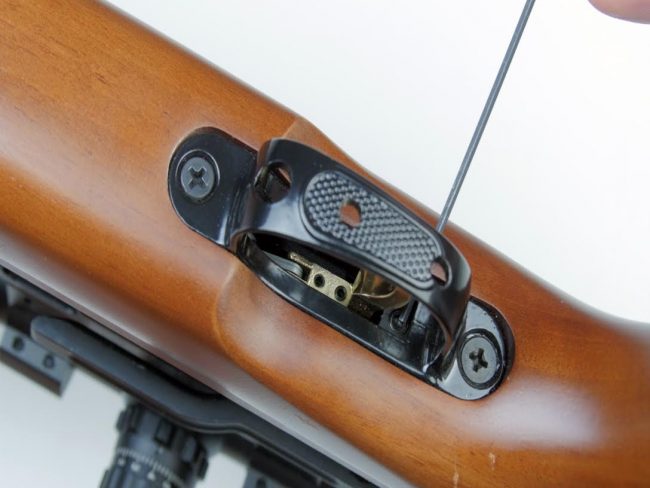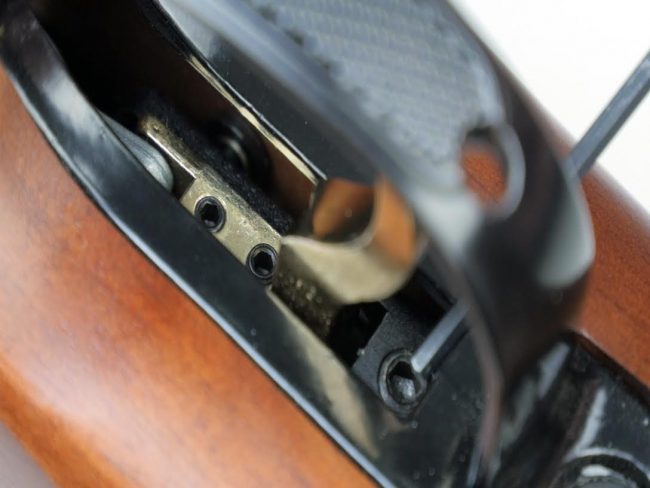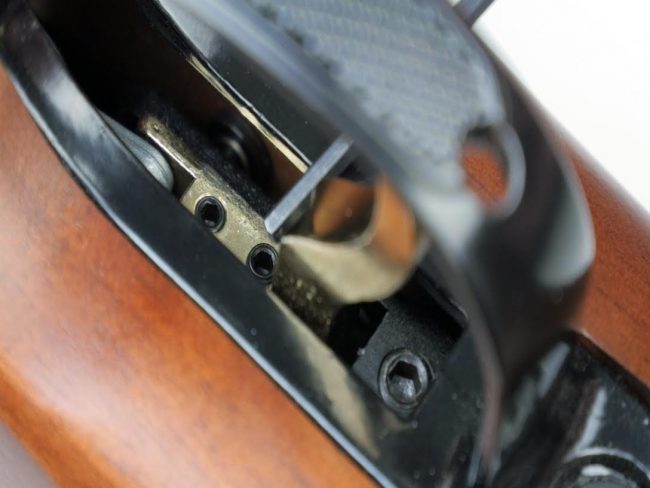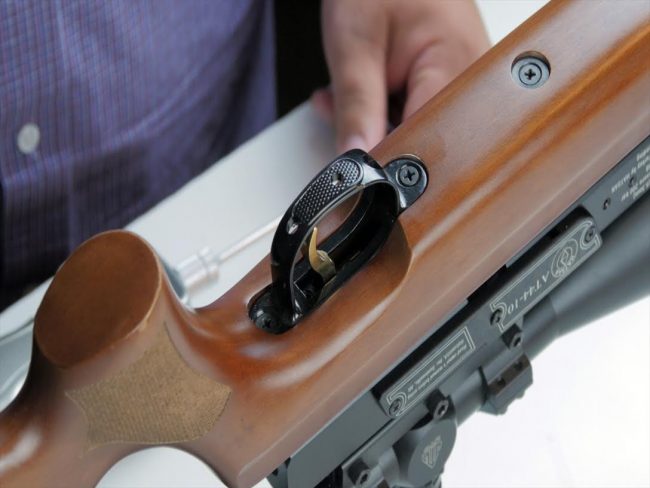We’re going to spend a little bit of time looking at how to adjust a few common triggers. The trigger is the shooter’s connection to their gun. Provided the rest of the gun is inherently accurate, the trigger pull may be the most critical point to achieving repeatable accuracy.
Hey, my trigger’s missing the 3rd screw!
Hatsan came out with their Quattro Trigger some time back. It was a big improvement and provides shooters with something they can work with. Adjusting it, however, can be a bit of a challenge. There are two common complaints with this trigger group. The first is that the trigger comes with the front two screws having heads on them, preventing you from screwing them in. While some complain this means you can’t adjust the trigger, they are incorrect because you BACK out the screws to adjust the trigger characteristics. There are some postings on-line that talk about replacing the screws with allen screws allowing for a full range of adjustments. You really need to know what you are doing if you try and go that route as it’s extremely easy to over adjust and render your gun non-functional. Or worse, set the trigger to have virtually no sear engagement and create a misfire situation. This is why Hatsan uses the headed screws in the rifles they send to the USA. The second most common complaint is that the third screw is missing. It is really there, you just have to look more closely. There is a tiny allen screw in the tension adjuster, that is the 3rd screw.

Stock Hatsan Quattro Trigger
So what screw does what?
There are 2 useful adjustments that I recommend when working with the Quattro trigger. The first is the rear tension adjuster. You want to back that out until you don’t feel any more resistance from the screw. Then turn it in about 1/4 turn just to add enough tension back so that it does not fall out. You can completely remove it and store it in a safe place if you like. Backing it out all the way reduces the trigger pull to the lowest possible pressure.

Quattro Trigger Tension Adjustment
The middle screw is the other adjustment that I work with. This screw changes the geometry and the length of the 2nd stage. Generally, you’ll want to back this screw out 3/4 turn to 1 & 1/4 turn. Each gun may be slightly different and 1/32 of a turn will make a big difference in the usable adjustment area. Seriously, this is very sensitive and you can go from a full 2nd stage pull to a non-shooting gun in about a 1/4 to 1/2 turn. By turning this out, you can take away almost all the 2nd stage creep and have a very nice, usable and predictable trigger.

Qattro 2nd Stage Position Adjustment
The front screw is designed to adjust the length of the 1st stage of the trigger. I just leave this all the way in. The spring that resets the 1st stage is not that strong and when/if you back this screw out, you wind up with a floppy 1st stage. I hate that so I just leave this one alone.
I’ve made these adjustments and it’s still way too hard to pull!
The last part about understanding the Quattro trigger has to do with shooting technique. The trigger is designed in such a way that the curve is way back and not under where the trigger actuates the mechanics. This means that when you pull straight back you are not really pulling as cleanly as you could and the shape of the trigger is working against you. If you adjust your pull upward by about 30 degrees, you’ll find that the trigger pull is greatly reduced. With the trigger tension all the way out and the correct pull angle, I generally get things adjusted down to about a 2 to 3 pound trigger pull with no second stage creep.

Adjusted Quattro Trigger
Take your time and only attempt if you are confident you know what you are doing.
I’ll go ahead and wrap things up here. The Quattro Trigger from Hatsan is one of the better triggers you’ll find, especially in the lower to middle-end price range. Even Hatsan’s Mod 95, a very good gun that sits well under $200, and comes equipped with the Quattro trigger. If you are going to attempt any adjustments, just make sure that you take your time and make very small adjustments. Always make adjustments and test in a safe area, always mindful where your muzzle is pointing. Safety must always be your first priority.